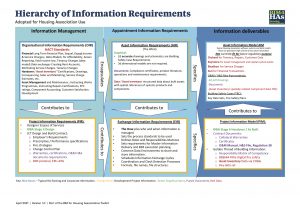BIM for Housing Associations, the housing-led BIM initiative, has launched Version 2 of its BIM4HAs Toolkit for housing providers. BIM Today talked to programme manager Su Butcher and vice-chair Ishka Heart about the project
BIM for Housing Associations was set up in 2018 in response to the growing need for better information management following the Grenfell Tower fire. Owned, run and managed by housing associations, we are an independent body that aims to take a proactive stance toward information management by making it easier for Registered Housing Providers (RPs) to adopt Building Information Modelling (BIM), specifically following the UK BIM Framework.
Since we launched, we have assembled a community of over 300 participants from 79 housing associations and 19 local authorities, along with supporters from the construction sector, technology, academia and professional associations. Our work has been funded by 10 major housing associations so that we can make the outputs free for all providers to use, whatever their size and budget.

How can the BIM4HAs Toolkit help professionals implement BIM for housing?
The toolkit is a set of tools to help housing professionals implement BIM. We began with the UK BIM Framework diagram (ISO 19650 Guidance Part 1 Concepts Figure 3), which explains the information delivery cycle and the key documents/resources required for asset management, project management and how they work together. We have adapted this diagram for housing associations’ use, with the aim of making implementation practical and understandable.
For each of the key documents, we have produced a tool that helps RPs understand the role of the document in language appropriate to their profession. The toolkit includes exemplar OIR, AIR, EIR documents and a Construction Operations Building Information Exchange (COBie) template as a base set of asset data to capture, which RPs can tailor to suit their needs. Also included are:
• An Equivalency Table of Definitions, which maps the language of ISO 19650 actors into corresponding roles within JCT Contracts.
• Exemplar Scopes of Services and a BIM Implementation Plan modelled on the RIBA Plan of Work, helping RPs to appoint the right professionals in the right way.
• An example of a Spatial Hierarchy, which illustrates how to map spaces from a PIM to an RP’s AIM.
• An essay on using BIM for existing buildings.
What’s new in Version 2?
Over the last year we’ve been working in two primary areas: ensuring the documentation continues to align with the UK BIM Framework as it is updated and developing new tools to fill gaps as they are identified.
The key new tool in Version 2 is the Asset Information Model (AIM), which represents a major investment, both from our funders and our volunteers. The AIM is the first housing association-developed data model for asset information in a housing association, made with the Golden Thread in mind. It was originally developed by Southern Housing Group and verified by over 20 other housing association asset managers and data experts. The AIM will enable RPs to use best practices to benchmark their existing internal information management processes and be empowered to talk to regulators, contractors, consultants and software providers from a position of knowledge about their buildings.
What’s next for the toolkit?
The toolkit has been downloaded more than 1,000 times from the National Housing Federation website. Now it has been in use for over a year, we are commissioning research to evaluate its use and learn from its users so that we can build on their experiences for later development of existing and new tools.
One of our future projects is a Data Dictionary, where we will pull together the definitive set of information that housing associations need to capture for asset management. We are recruiting asset manager volunteers and subject matter experts to help in this project, and the toolkit includes information about how to participate, together with access to the pilot template we have completed on fire doors.
What makes BIM4HAs different?
The work our volunteers have done has not only helped the housing sector move towards the implementation of digital best practices but has also helped promote the UK BIM Framework to an audience who can use it to prepare for the requirements of the Building Safety Act. We have a shared responsibility to put in place the cultural and technical changes needed, and we are proud to be a client-led information management initiative that will help bring that about.
Find out more about the BIM4HAs Toolkit at housing.org.uk/BIM4Has.
Su Butcher
Programme manager
Ishka Heart
Vice-chair
BIM for Housing Associations
















